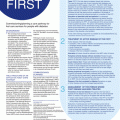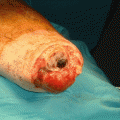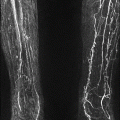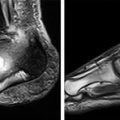© Springer-Verlag London 2015
Clifford P. Shearman (ed.)Management of Diabetic Foot Complications10.1007/978-1-4471-4525-7_11. Foot Complications in Diabetes: The Problem
(1)
Department of Vascular Surgery, University of Southampton, University Hospital of Southampton NHS Foundation Trust, E Level North Wing, Southampton General Hospital, Southampton, Hampshire, SO16 6YD, UK
Keywords
DiabetesDiabetic footDiabetic foot ulcersAmputationHealth care costsBackground
There are currently in excess of three million people diagnosed with diabetes in England. That amounts to 5.5 % of the adult population and at least a further 2 % remain undiagnosed [1]. The prevalence of the condition is increasing rapidly and it is estimated that 8.5 % of adults will have diabetes by 2020 due to obesity and an aging population.
Foot complications are a common and costly cause for admission to hospital and are strongly associated with the risk of amputation. The cost of foot complications has been estimated at £639–662 million annually or 0.6–0.7 % of the NHS budget [1].
The At-Risk Foot
People with diabetes are prone to foot complications due to neuropathy, arterial disease and infection. Neuropathy is found in up to 28 % of people with diabetes and is more common in those who have had the condition for over 10 years or whose control has been poor. Sensory neuropathy will reduce awareness of injury to the foot, especially due to repetitive trauma such as ill-fitting foot-wear. It also has an effect on proprioception and gait, which alters biomechanical load distribution. Autonomic neuropathy will reduce sweating, resulting in dry and cracked skin, leading to infection. Autonomic regulation of skin blood flow may be lost with shunting through arteriovenous fistulae, producing the pink, warm but ischaemic foot with reduced nutritional blood flow to the tissues. Most importantly, people with diabetes have a four fold increased risk of developing peripheral arterial disease (PAD), and it is estimated that even at the time of diagnosis, 8 % of type 2 diabetics have PAD and one-third of those over the age of 40 years have PAD. The presence of PAD is associated with a 10–16-fold risk of amputation but also a 70–80 % risk of dying from cardiovascular disease (mainly myocardial infraction and stroke) compared to a person with diabetes but no PAD [2].
The immune response of patients with diabetes may be obtunded and neutrophil phagocytosis is impaired due to chronic hyperglycemia. This will not only make the individual more prone to infection in a foot wound, but their systemic response may be reduced and only about one third of patients with a foot infection will have a temperature. The patient may not be aware of infection until advanced and clinicians often underestimate the extent of the infection.
In the person with diabetes, then, it is easy to see how the foot is more vulnerable to damage and injury, often resulting in skin damage and an ulcer. Reduced blood supply due to PAD results in either slow or non-healing of the wound and infection will ensue.
Diabetic Foot Ulcers
Diabetic foot ulcers (DFUs) are extremely common, and the lifetime risk of a patient with diabetes developing a foot ulcer is 15 %. At any one time between 2.2 and 7 % of the diabetic population will have an ulcer, being more common in those over 60 years of age. Based on this it can be estimated that in England at any one time there will be at least 61,400 people with active DFUs [1].
Around two-thirds of DFUs will heal with treatment, but it can be a slow process, often taking more than a year, and over half will get recurrent ulceration within 12 months [3]. DFUs have a significant impact on the quality of life of the patient. Up to 84 % of people reported a major impact of a DFU on their lives including reduced mobility, pain and anxiety and depression [4]. The inability to stand or walk was found to be the most important determinant of their quality of life.
Perhaps most worryingly, the development of a DFU is a major prognostic indicator of mortality risk. Over half of patients who develop a foot ulcer will be dead within 5 years, largely from cardiovascular disease and complications of diabetes [5].
Foot Complications and Amputation
The most worrying complication of a DFU is the progression to limb amputation. This is either due to failure to heal the primary ulcer, recurrent ulceration or chronic infection. Many patients with foot complications who are admitted to hospital require minor amputation (below the ankle, usually digits or trans-metatarsal) as part of the treatment to control infection or remove dead tissue. Although often an essential part of their treatment, the change in foot architecture caused by the amputation will put them at increased risk of further problems.
Stay updated, free articles. Join our Telegram channel

Full access? Get Clinical Tree








